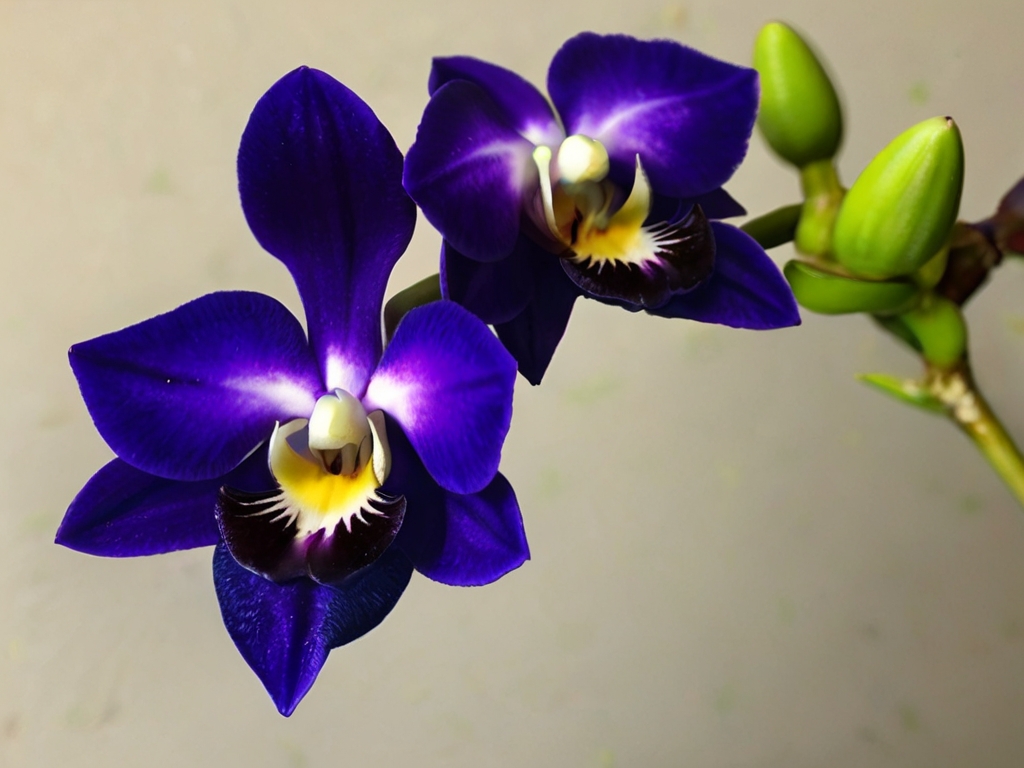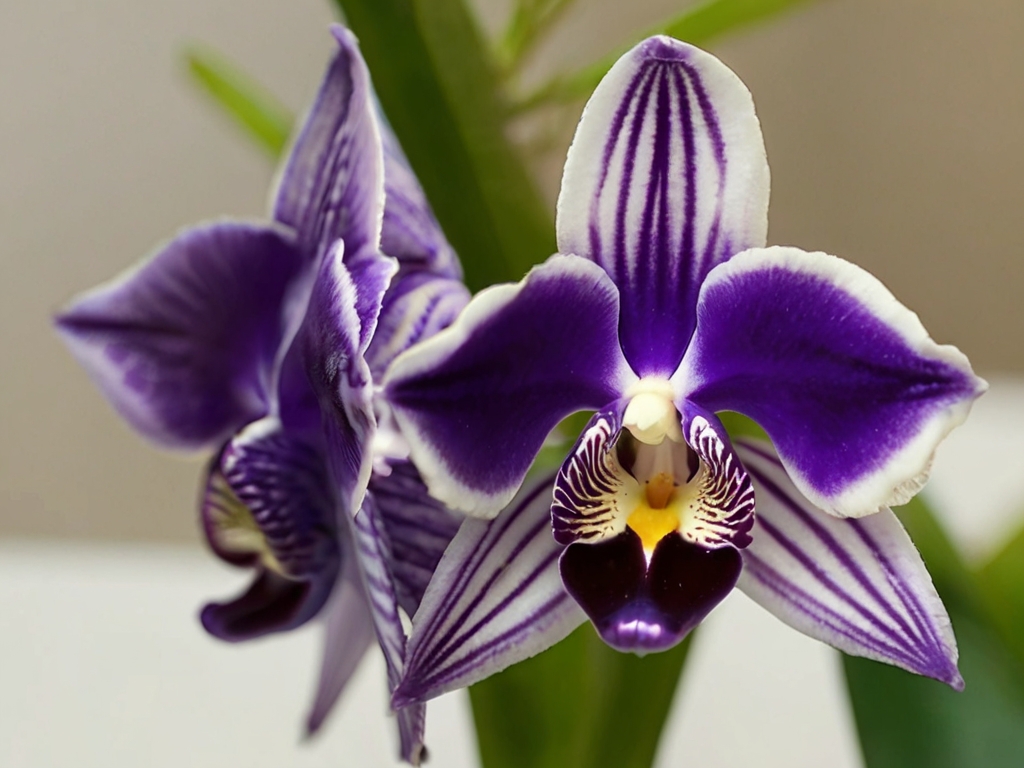Blue Dendrobium Orchids are a stunning and unique variety of orchids that have captivated the hearts of many flower enthusiasts. These orchids are known for their vibrant blue colour, a rarity in the orchid world. The history and origin of Blue Dendrobium Orchids can be traced back to Southeast Asia, where they are native to countries such as Thailand, Malaysia, and the Philippines.
Table of Contents
- Understanding Blue Dendrobium Orchids
- Choosing the Right Location for Your Blue Dendrobium Orchids
- Light Requirement
- Humidity
- Watering
- Fertilizing
- Repotting Blue Dendrobium Orchids
- Pruning Blue Dendrobium Orchids
- Preventing Pests and Diseases in Blue Dendrobium Orchids
- Propagating Blue Dendrobium Orchids
- Conclusion and Final Thoughts on Blue Dendrobium Orchids
Blue Dendrobium Orchids are part of the Dendrobium genus, one of the largest genera in the orchid family. They are epiphytic orchids, meaning they grow on other plants or trees rather than in soil. The unique feature of Blue Dendrobium Orchids is their striking blue colour, which is achieved through genetic modification. This process involves introducing a specific gene into the orchid’s DNA to produce the blue pigment.
Understanding Blue Dendrobium Orchids

There are several types of Blue Dendrobium Orchids, each with unique characteristics. Some popular varieties include Dendrobium Blue Moon, Dendrobium Blue Sapphire, and Dendrobium Blue Violet. These orchids vary in size, shape, and shade of blue, but all share the same stunning colour that sets them apart from other orchid varieties.
Blue Dendrobium Orchids have specific growth habits and requirements that must be met to thrive. They thrive in bright but indirect light, so it is best to place them by a window with filtered sunlight. They also require high humidity and good air circulation to prevent fungal diseases. In terms of temperature, Blue Dendrobium Orchids prefer warm conditions with daytime temperatures between 70-85°F (21-29°C) and nighttime temperatures between 60-65°F (15-18°C).
Choosing the Right Location for Your Blue Dendrobium Orchids
When it comes to growing Blue Dendrobium Orchids, you can grow them indoors or outdoors. Indoor growing is a popular choice for those who live in colder climates or don’t have access to suitable outdoor growing conditions. However, living in a tropical or subtropical climate, you can also grow Blue Dendrobium Orchids outdoors.
Light Requirement
When growing Blue Dendrobium Orchids indoors, providing them with the right amount of light is important. They need bright but indirect light, so placing them near a window with filtered sunlight is ideal. If you don’t have access to enough natural light, you can supplement with artificial grow lights.
Humidity
Regarding humidity and air circulation, Blue Dendrobium Orchids thrive in high-humidity environments. You can increase humidity levels by placing a water tray near the orchids or using a humidifier. Good air circulation is also important to prevent fungal diseases, so ensure adequate airflow around the plants.
Watering
Proper watering is crucial for the health and well-being of Blue Dendrobium Orchids. These orchids prefer to be kept slightly on the drier side, so it’s important not to overwater them. The frequency and amount of watering will depend on various factors such as temperature, humidity, and potting medium.
Generally, Blue Dendrobium Orchids should be watered when the potting medium feels dry to the touch. This usually translates to watering once every 7-10 days but may vary depending on your growing conditions. When watering, thoroughly saturate the potting medium and allow any excess water to drain out.
It’s also important to use good quality water when watering your Orchids. They are sensitive to chemicals such as chlorine and fluoride, so it’s best to use filtered or distilled water. The water temperature should be lukewarm, as extreme temperatures can shock the roots.
Signs of overwatering in Blue Dendrobium Orchids include yellowing leaves, root rot, and a foul smell coming from the potting medium. On the other hand, signs of underwatering include wrinkled or shrivelled leaves and a dry potting medium.
Fertilizing
Fertilizing is important to caring for Blue Dendrobium Orchids, providing them with the necessary nutrients for healthy growth and blooming. Several fertilizers can be used for orchids, including balanced orchid fertilizers, slow-release fertilizers, and organic fertilizers.
Blue Dendrobium Orchids should be fertilized every 2-4 weeks during the growing season, typically spring and summer. It’s important not to overfertilize, as this can lead to salt buildup in the potting medium and damage the roots. Follow the instructions on the fertilizer package for the correct amount to use.
Signs of overfertilizing in Blue Dendrobium Orchids include:
- Brown or burnt leaf tips.
- Stunted growth.
- A buildup of salts on the potting medium.
Under-fertilizing, on the other hand, can result in weak growth and poor blooming.
Repotting Blue Dendrobium Orchids
These Orchids should be repotted every 1-2 years to provide fresh potting medium and ensure optimal growth. The best time to repot is after the orchid has finished blooming and entered its dormant phase.
When repotting Blue Dendrobium Orchids, choosing the right potting mix is important. They prefer a well-draining mix that allows air to circulate the roots. A common mix for orchids is a combination of bark, sphagnum moss, and perlite.
To report:
- Gently remove the orchid from its current pot and carefully untangle the roots.
- Trim any dead or rotting roots with sterilized scissors.
- Place the orchid in a new pot with fresh potting mix, positioning it so that the newest growth is facing towards the centre of the pot.
- Gently press the potting mix around the roots and water thoroughly.
Pruning Blue Dendrobium Orchids
Pruning is important for maintaining the health and appearance of Blue Dendrobium Orchids. It may be necessary for several reasons, including removing dead or diseased parts, promoting new growth, and maintaining a compact shape.
Before pruning, sterilize your pruning tools to prevent the spread of diseases. Common tools used for pruning orchids include sterilized scissors or pruning shears.
Remove any dead or yellowing leaves or stems when pruning blue dendrobium orchids. This will help improve air circulation and prevent the spread of diseases. To promote new growth, you can also prune back old flower spikes to encourage the orchid to produce new ones.
Preventing Pests and Diseases in Blue Dendrobium Orchids
Blue Dendrobium Orchids are susceptible to various pests and diseases affecting their health and blooming. Some common pests that may infest these orchids include aphids, mealybugs, scale insects, and spider mites. Diseases such as root rot, fungal infections, and bacterial infections can also occur without proper care.
Signs of pest infestations include yellowing leaves, distorted growth, and the presence of insects on the plant. Signs of diseases include black or brown spots on the leaves, wilting or drooping leaves, and a foul smell coming from the potting medium.
To prevent pests and diseases, it’s important to maintain good hygiene practices and provide optimal growing conditions for your Orchids. This includes:
- Regularly inspecting your plants for any signs of pests or diseases.
- Providing proper air circulation and humidity levels.
- Avoiding overwatering.
Propagating Blue Dendrobium Orchids
Propagating Blue Dendrobium Orchids can be done through several methods, including division, backbulb, and keiki propagation. The ideal time for propagating these orchids is during their active growing season, typically spring and summer.
Division involves separating a mature orchid into smaller sections, each with its roots and growth points. Backbulb propagation involves removing the backbulbs (older pseudobulbs) from the orchid and planting them in a separate pot. Keiki propagation involves allowing a keiki (baby plant) to develop on the orchid and separating it once it has developed its own set of roots.
To successfully propagate Blue Dendrobium Orchids, it’s important to provide the new plants with the same growing conditions as the parent plant. This includes providing the right amount of light, humidity, and temperature.
Conclusion and Final Thoughts on Blue Dendrobium Orchids
In conclusion, Blue Dendrobium Orchids are a stunning variety of orchids that have captivated flower enthusiasts with their vibrant blue colour. These orchids have specific growth habits and requirements that must be met to thrive. They prefer bright but indirect light, high humidity, and warm temperatures.
Depending on your climate and growing conditions, you can grow blue dendrobium orchids indoors or outdoors. Proper watering, fertilizing, and repotting are crucial for their health and well-being. Pruning and preventing pests and diseases are important to caring for these orchids.
Blue Dendrobium Orchids are a unique and beautiful addition to any orchid collection. With the right care and attention, they can reward you with stunning blooms year after year. So why not give them a try and experience the beauty of Blue Dendrobium Orchids for yourself?

